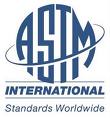STL 2.0 May Replace Old, Limited File Format
Since soon after it was developed, people in the rapid prototyping field have talked about replacing the industry-standard STL file format. Yet it has endured for 22 years.
Still, the pressure for change builds. And now there is a mechanism that may allow it to happen. The ASTM Committee on Additive Manufacturing Standards (F42) had its first meeting in July, and agreed to form a task group to recommend a new file format standard, dubbed STL 2.0.
 The ASTM process may allow for the replacement of the STL file format |
As Lipson tells it, STL endured so long for one reason: it's not over-complicated. "The beauty of it is it's very very simple," he says. "You can code it up very quickly and you can read or write to it very simply. For years, simplicity outweighed any other drawbacks, but the balance is beginning to change."
Now, with the advancing capability of additive fabrication systems, simple isn't sufficient anymore, and the problem is growing. "There are new technological capabilities that the format doesn't address," Lipson says. He notes the "obvious" new needs (multiple materials, color, microstructure requirements) as well as "more subtle" ones:
- Better accuracy in representing curved surfaces
- Surface texturing requirements
- Buildability verification (leak patching)
- Inclusion of metadata (e.g. authorship and copyright information)
The STL file format doesn't just lack these capabilities, it also has a few inherent problems: file size is excessive, file security is limited, and it can't detect or fix errors (especially unintended holes) in the part to be built.
Origins
The STL format was developed by the Albert Consulting Group (Albert-Battaglin Consulting Group today) for 3D Systems in 1987 for moving 3D CAD models to its stereolithography apparatus (SLA) machines. STL files use linked triangle facets to describe the surface geometry of a three dimensional object. The STL format allows for both ASCII and (smaller) binary representations. STL is an acronym of Standard Tessellation Language.
Over the years, a number of companies and individuals have proposed changing the standard, but to no avail. Instead, system manufacturers have developed their own proprietary standard to optimize the capability of their equipment. Z Corporation uses ZPR, a file format that accommodates properties such as color and texture. Objet Geometries uses its ObjDF format for its multi-part multi-material Connex 3D printers.
Of course, a whole software and service industry has grown up around repairing and otherwise manipulating STL files. Software packages include the Materialise Magics RP suite, SYCODE's OpenRP, Virtual Grid's VRMesh Design, TransMagic's STL PRO, and Robert McNeel & Associates' Rhino, among others.
This industry, combined with STL-based software investments made by hardware manufacturers, has created a constituency that is invested in the status quo. "The biggest challenge is reaching a consensus and adoption by industry," concedes Lipson.
Input
To help generate consensus, Lipson is soliciting input via an online survey and discussion group. He plans to keep the survey up for "a couple months."
RapidToday talked to Lipson one week after the launch of the survey. Already, he had received 130 completed surveys. "The response is better than I was hoping for," he says.
Following a quick review of the results so far, Lipson noticed a top concern for the new format: It should be a non-proprietary open format. "Making it open format will make it future-proof," Lipson says. "It will be something that can grow and can be backwards and forwards compatible."
He also adds a personal opinion: "Keeping it simple is key."
Lipson plans to present the results of the survey November 9-10, 2009 at the Committee on Additive Manufacturing Standards meeting at ASTM International headquarters in West Conshohocken, PA. From there, he hopes to have a draft out by March, 2010, followed by two months of discussion, and a finalization by mid-2010.
"In terms of developing code, we'll see if someone on the task force will volunteer to do it," Lipson says. The group has about 20 members.
Want to comment on this article? Visit our Rapid Prototyping Forum.
Want to read more? Visit our Rapid Prototyping Archive.